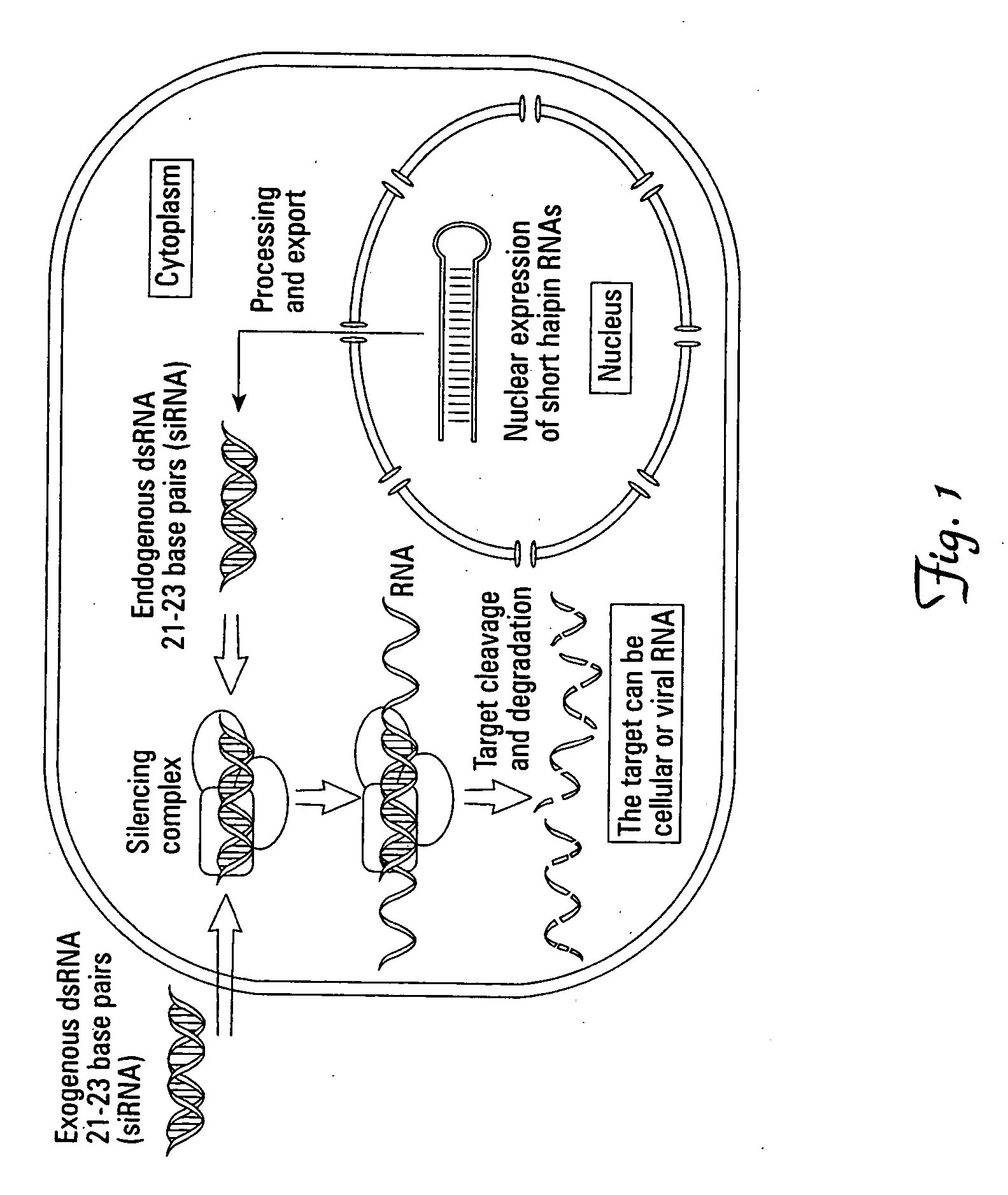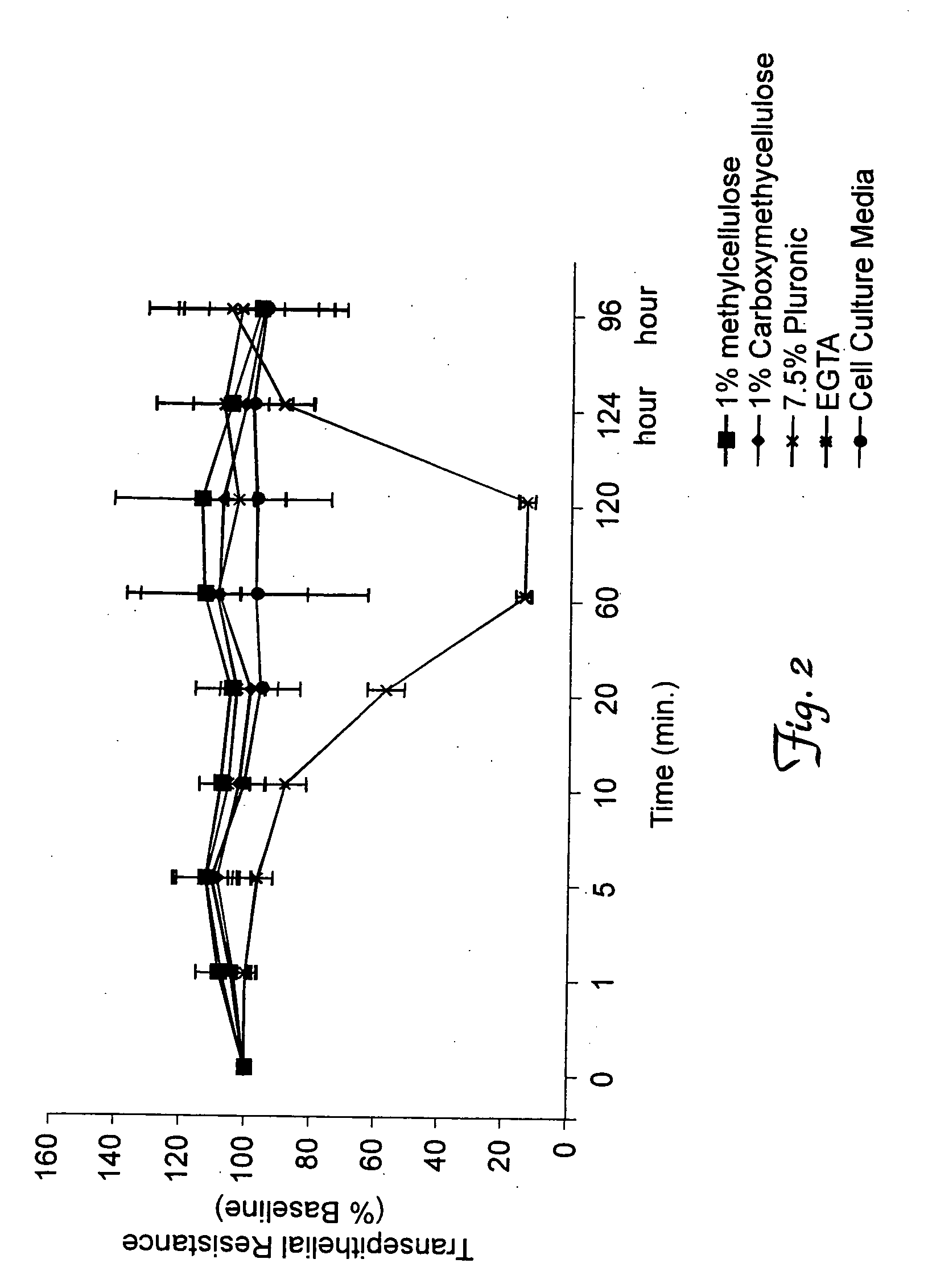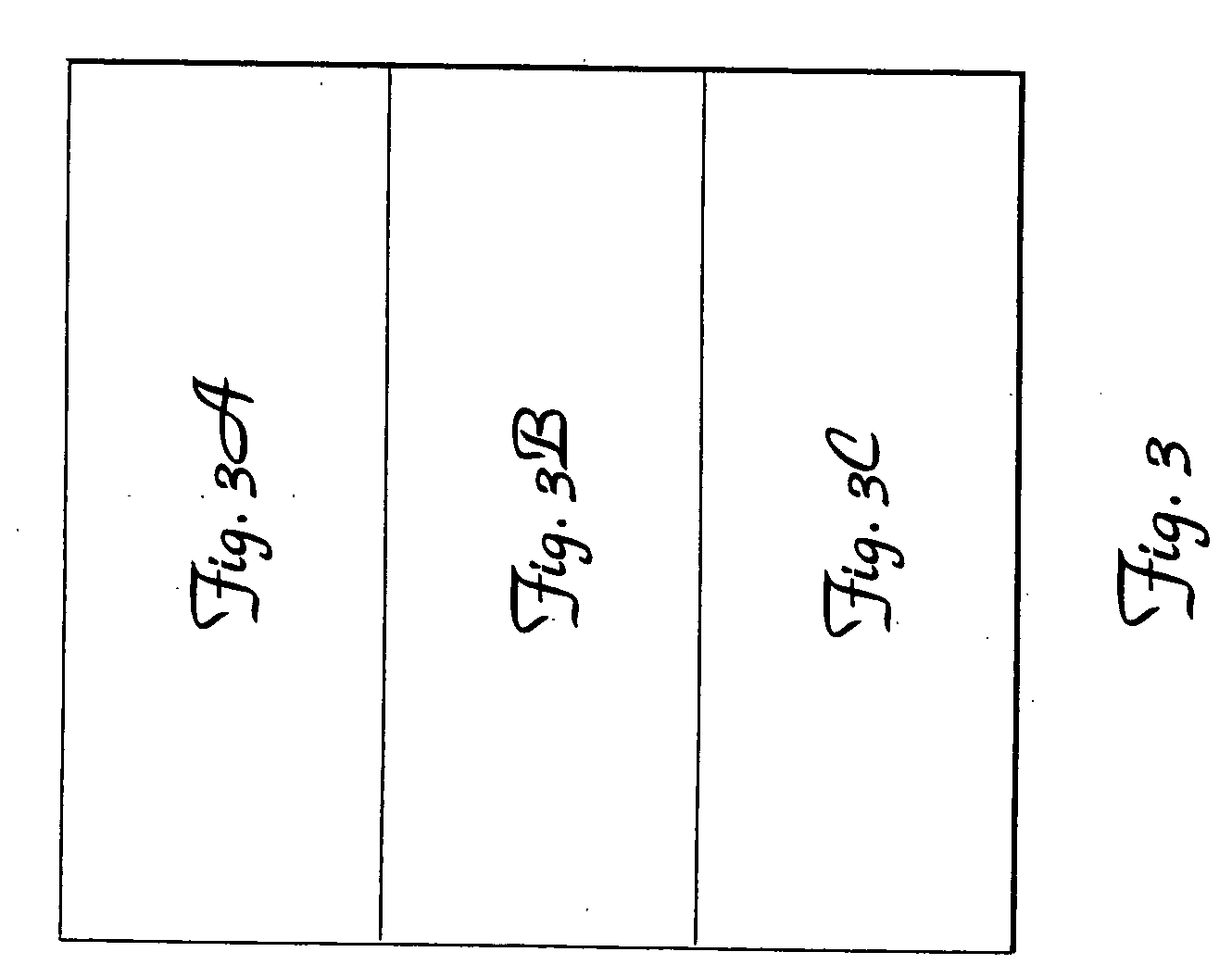RNA interference in respiratory epitheial cells
a technology of respiratory epitheial cells and rna, which is applied in the direction of genetic material ingredients, anti-inflammatory agents, drug compositions, etc., can solve the problems of complex set of rules, affecting the effect of rna activity, and unable to target sirna molecules, so as to enhance the processing and enhance the effect of processing
- Summary
- Abstract
- Description
- Claims
- Application Information
AI Technical Summary
Benefits of technology
Problems solved by technology
Method used
Image
Examples
example 1
Delivery of RNA to Pulmonary Epithelium In Vitro
[0242] An issue of significant importance for successful mRNA targeting is the ability to efficiently deliver double stranded siRNA, or siRNA expression vectors, to the cytoplasm of airway epithelia. The polarized epithelial model presents more challenges for delivery and more closely represents the in vivo epithelium. The inventors asked if synthetic double stranded siRNA oligonucleotides could also be delivered to well-differentiated airway epithelial cells in vitro. The inventors evaluated the efficiency of siRNA uptake in airway epithelia using Cy3 -fluorescently tagged double stranded 21 -mer RNAi oligonucleotides (Dharmacon). The reagent was delivered to the polarized primary human epithelia with or without a commercial transfection reagent optimized for dsRNAi (TransIT-TKO, cat#MIR 2154, Mirus). Cytoplasmic staining was observed, indicating delivery of the labeled RNAi following apical application of 100 μl of the reagent at a ...
example 2
In vivo Delivery of RNAi to the Lungs of Mice.
[0244] Mucociliary clearance and other pulmonary innate defense mechanisms pose significant barriers to gene transfer vectors. The inventors previously demonstrated that Ca2+ chelators such as EGTA enhance gene transfer to well differentiated airway epithelia. U.S. patent application Ser. No. 09 / 448,613. This effect may result from the combined effects of cilia stasis and the opening of epithelial tight junctions. Furthermore, viscoelastic agents enhance gene transfer to airway epithelia when formulated with adenoviral vectors.
[0245] Methods of in vivo delivery of RNAi in mice were developed. These include the following approaches: 1) Delivery as a viral gene transfer vector encoding the a shRNA sequence (e.g., adenovirus or retrovirus), 2) Delivery as a non-viral vector encoding the RNAi sequence, such as plasmid DNA, and 3) Delivery of 21-mer to 23-mer dsRNA oligonucleotides (with or without a lipofection agent or electroporation).
[...
example 3
Gene Transfer Formulated with Viscoelastic Gels
[0247] A. Formulating an Adenoviral Vector in Viscoelastic Gels Markedly Enhances Gene Transfer to the Conducting Airways.
[0248] The gene transfer enhancing effects of an adenoviral vector formulated with viscoelastic gels was tested in mice in vivo. A nuclear targeted beta-galactosidase expressing adenoviral serotype 5-based vector (AdbetaGal, as a marker for shRNA) was formulated with 1% methycellulose A4C, 1% carboxymethylcellulose, or 7.5% Pluronic-brand polaxamer polymer F127. Approximately 2.5×108 pfu of vector / gel formulation in a 50 microliter volume was delivered via direct oro-tracheal intubation to the airways of 3 month old male Balb / c mice under ketamine anesthesia. Four days following vector delivery, the mice were sacrificed, the lungs were removed, fixed in 2% formaldehyde / 0.2% gluteraldehyde, and X-gal stained for 4 hours at 37° C. The appearance of beta-galactosidase positive cells was readily apparent to the naked e...
PUM
| Property | Measurement | Unit |
|---|---|---|
| volume | aaaaa | aaaaa |
| Tm | aaaaa | aaaaa |
| temperatures | aaaaa | aaaaa |
Abstract
Description
Claims
Application Information
 Login to View More
Login to View More - R&D
- Intellectual Property
- Life Sciences
- Materials
- Tech Scout
- Unparalleled Data Quality
- Higher Quality Content
- 60% Fewer Hallucinations
Browse by: Latest US Patents, China's latest patents, Technical Efficacy Thesaurus, Application Domain, Technology Topic, Popular Technical Reports.
© 2025 PatSnap. All rights reserved.Legal|Privacy policy|Modern Slavery Act Transparency Statement|Sitemap|About US| Contact US: help@patsnap.com



